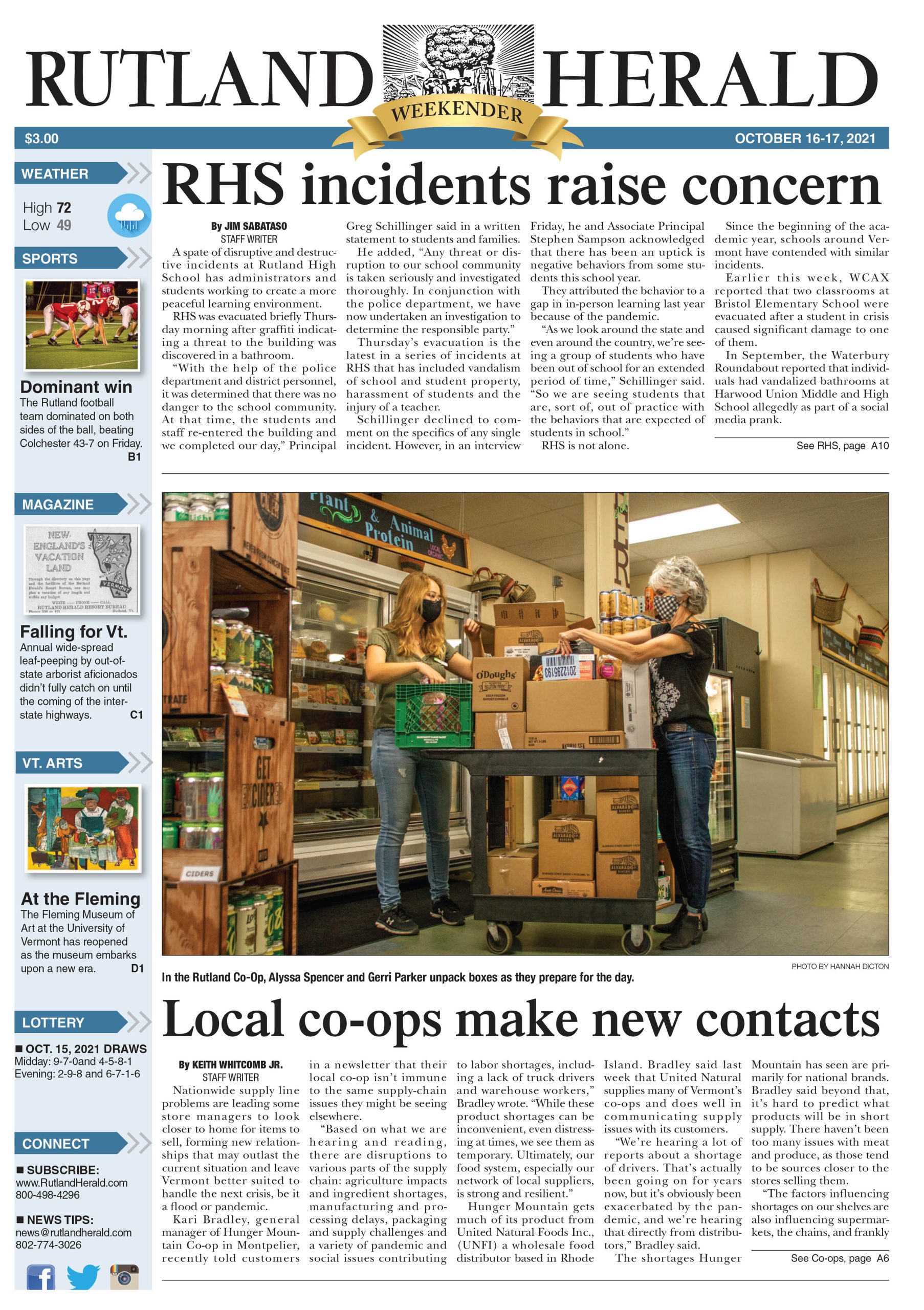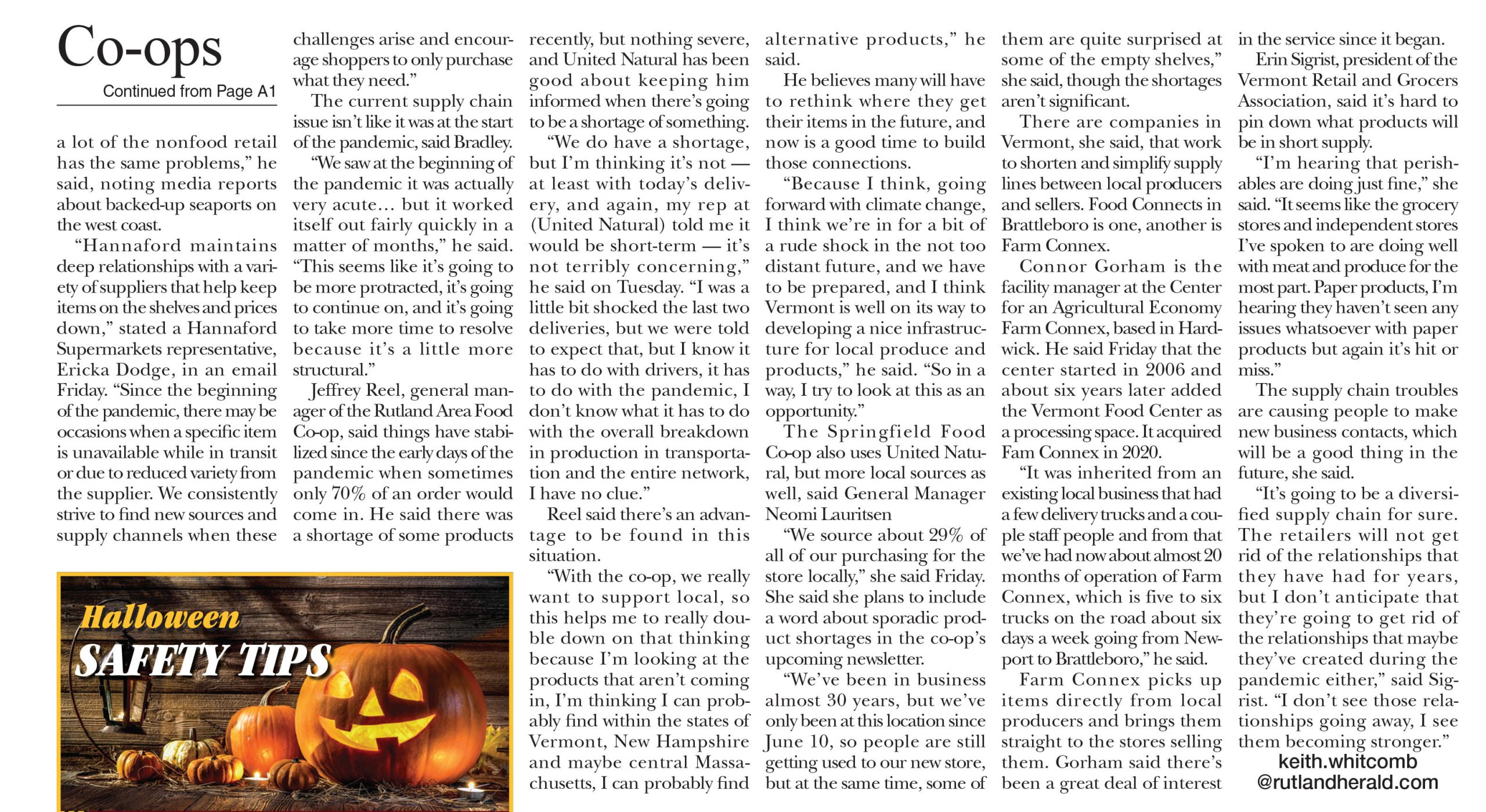The debate on how to lower health care costs in Vermont is of paramount importance. Of equal importance is balancing that debate with discussions on the quality of life we can achieve right now.
In 2020, 315,000 pharmacists in 88,000 retail drug stores dispensed almost 4.5 billion outpatient prescriptions to more than 260 million Americans. These prescriptions covered 50 billion pills, at a cost to the public of more than $350 billion. This represented about 8.5% of total U.S. health care costs that year, which came to a whopping $4.1 trillion.
Fifty years ago, television ads about medicine were limited to cough syrup and aspirin (the iconic Speedy Alka Seltzer character was an advertising coup.). Today, the airwaves are dominated by commercials for prescription medications, most with potentially serious, even deadly, side effects.
Conventional medical theory posits there are “main” effects and “side” effects of medications. In truth, “side effects” are found nowhere in nature. All effects are main effects, and all effects of a drug should be considered its main effects as well — exerting major influences on the body and impacting our health.
Flipping through a popular weekly news magazine, I randomly selected the first ad I saw for a prescription drug: Rexulti (brexpiprazole). It is prescribed as an anti-depressant. The listed side effects include: Increased death in elderly people who live with symptoms of dementia; Increased risk of suicidal thoughts and actions, including children; Stroke; Uncontrolled body movements, where you lose control of your face, tongue and other body parts. According to the manufacturer, these symptoms may never go away, even after you stop taking the drug; Increased fat levels and weight gain; Hyperglycemia, diabetes, leading to coma or death; Unusual and compulsive urges, including compulsive gambling, compulsive sexual urges, shopping, or binge eating; Low white blood cell count; Decreased blood pressure; The drug can make you sleepy or dizzy, slows your thinking and motor skills, and may lead to falls and fractures; Seizures (convulsions); Problems controlling your body temperature. Stay in a cool place if possible; Difficulty swallowing, which can cause food or liquid to get into your lungs. As a disclaimer, it adds: “These are not all the possible side effects of REXULTI.”
Ask your doctor if REXULTI is right for you!
These are commonly described as “side effects,” as if to say, “Oh, incidentally, you will likely experience some or all of these life-altering symptoms as a result of taking this prescription.”
These side effects are almost always treated with drugs, which exert side effects of their own. In short order, a host of symptoms appear as drugs interact. Physical problems multiply and spiral out of control. Eventually, people lose the ability to clearly recognize the causes behind their original symptoms, relegating themselves to passive participants in their own recovery. And, sadly too often, it’s not about “recovery” at all but simply disease management.
Steeping out on a ledge here, this is not to minimize the severity of depression, but I would suggest micro-doses of psilocybin would achieve the same goal without the so-called “side effects.” Of course, the mushroom remains illegal in most parts of the United States, but that is changing as its therapeutic applications are being recognized and pursued.
Most of us have been raised in a culture that encourages the worst eating and lifestyle habits. From the earliest years onward, our immune systems are compromised through the accumulation of antibiotics and hormones that we have taken in through the consumption of chicken, beef and dairy products; in general, our symptoms are suppressed rather than addressed; we eat poor-quality food; we eat too much food; we consume chlorinated water, air and ground pollutants, artificial colors and preservatives, herbicides, fungicides, pesticides and ingest numerous carcinogens that are spun off as “side effects” of our food and industrial manufacturing processes … the list is familiar and uncommonly long.
From the moment of conception onward, the body does its best to walk through life under these gale-force winds of adversity. And as the body begins to falter, as it eventually must, it then becomes subject to still further chemical and medical interventions: beginning with routine X-rays and antibiotics, progressing to invasive surgeries, radiation, chemotherapy, organ removal and the artificial replacements for living tissue.
This isn’t to say we should not avail ourselves of antibiotics and other medications and surgical procedures. Most of us have been beneficiaries of their use. And there is that aspect of technology that performs miracles reattaching limbs and reestablishing sight and sound, and the pace of technological changes quickens and delights.
But for the first time in history, lifestyle diseases like diabetes, heart disease, obesity and some cancers, kill more people than communicable ones, and the cost in managing them (as opposed to curing them) is crippling — financially, physically and emotionally.
People often begin practicing a holistic diet and lifestyle after having been diagnosed with one specific, often serious, illness. But rarely are they experiencing just that one physical difficulty. They might also be suffering with such symptoms as low back pain (quite often indicating kidneys), skin rashes, fitful sleep, poor appetite, inflammation, depression. Most people then adapt themselves to living with these symptoms, believing them to be either simply part of the aging process or of minor consequence compared to their more serious diagnosis.
The beauty of holistic lifestyle practices is, as we change our diet and lifestyle, many symptoms can begin to diminish across the board, simultaneously. The whole body responds favorably to the same corrective measures: rashes diminish, sleep deepens, appetite returns, back pain subsides, energy levels increase. Such are the “side effects” of holistic lifestyle and dietary practices, which have a positive, cascading effect upon our health and well being.
No one size fits all when it comes to dietary needs, but we do share a common heritage: We have evolved over millions of years under conditions of natural light, pure water and whole, unadulterated foods. Environmental influences that range over such a vast span of time have fashioned the human body like the hands of a sculptor, and we can safely assume the very essence of who we are has been defined by that relationship. Any deviation at all from this natural order will invite a measure of stress and, eventually, disease.
Many of us, by necessity, have set for ourselves the goal of regaining our health. But a healthy body should not be an end in itself. After all, health is our birthright, and we are meant to use our health to pursue our goals.





